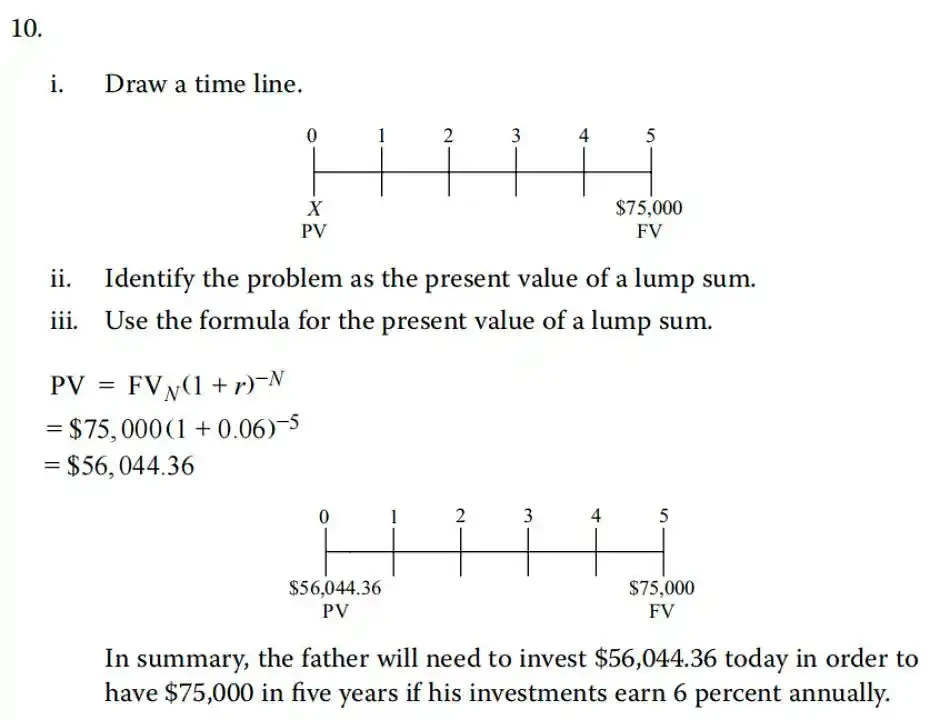


==============================================
Alpha is a key performance metric in quantitative trading, representing the excess return a trader or portfolio manager generates relative to a benchmark. In simple terms, alpha indicates how much value a strategy or model adds over and above the market return. Whether you’re an institutional investor, a retail trader, or a hedge fund manager, calculating alpha is crucial to understanding the effectiveness of your trading strategies. In this comprehensive guide, we will delve into how to calculate alpha in quantitative trading, the methods used, and how it can improve your trading decisions.
- What is Alpha in Quantitative Trading?
—————————————–
1.1 Definition of Alpha
In the context of quantitative trading, alpha is the measure of the active return on an investment relative to a market index or benchmark. It represents the strategy’s ability to outperform the market after adjusting for risk. Mathematically, alpha is often expressed as:
α=Rportfolio−(Rrisk-free+β(Rmarket−Rrisk-free))\alpha = R_{\text{portfolio}} - (R_{\text{risk-free}} + \beta (R_{\text{market}} - R_{\text{risk-free}}))α=Rportfolio−(Rrisk-free+β(Rmarket−Rrisk-free))
Where:
- RportfolioR_{\text{portfolio}}Rportfolio = return of the portfolio
- Rrisk-freeR_{\text{risk-free}}Rrisk-free = return of the risk-free asset (e.g., treasury bonds)
- β\betaβ = beta, a measure of the portfolio’s volatility compared to the market
- RmarketR_{\text{market}}Rmarket = return of the market index (e.g., S&P 500)
A positive alpha indicates that the portfolio or strategy has outperformed the benchmark, while a negative alpha suggests underperformance.
1.2 Why is Alpha Important?
Alpha is often considered the ultimate measure of a trader’s or investor’s skill. It represents the value added through decision-making, trading strategy, and market timing. For quantitative traders, generating positive alpha is the goal, as it reflects the effectiveness of the models and algorithms used. Alpha also helps investors assess whether the excess returns are worth the risks associated with a particular strategy.
1.3 The Role of Alpha in Portfolio Performance
Alpha helps traders and investors assess whether their performance is due to skill or just market movements. A high alpha means the portfolio has outperformed its benchmark after adjusting for risk, and it can be a sign of a successful trading strategy. However, it’s important to note that a consistently positive alpha is difficult to achieve and requires precise modeling, backtesting, and fine-tuning.
- Methods for Calculating Alpha
——————————–
There are various methods to calculate alpha in quantitative trading. Below, we’ll cover two of the most commonly used techniques: the CAPM Model and the Factor Models.
2.1 Capital Asset Pricing Model (CAPM)
The Capital Asset Pricing Model (CAPM) is one of the most widely used models for calculating alpha. It assumes that an asset’s return is determined by its relationship with the broader market (represented by a benchmark such as the S&P 500) and the risk-free rate of return.
2.1.1 CAPM Alpha Calculation
The formula for calculating alpha in the CAPM model is:
αCAPM=Rportfolio−(Rrisk-free+β(Rmarket−Rrisk-free))\alpha_{\text{CAPM}} = R_{\text{portfolio}} - \left( R_{\text{risk-free}} + \beta (R_{\text{market}} - R_{\text{risk-free}}) \right)αCAPM=Rportfolio−(Rrisk-free+β(Rmarket−Rrisk-free))
Where:
- RportfolioR_{\text{portfolio}}Rportfolio is the return of the portfolio or trading strategy
- Rrisk-freeR_{\text{risk-free}}Rrisk-free is the risk-free rate
- β\betaβ is the portfolio’s beta (its sensitivity to market movements)
- RmarketR_{\text{market}}Rmarket is the return of the market index (benchmark)
This model helps in understanding how much return the portfolio is generating compared to what would be expected based on the market’s performance and the portfolio’s risk profile.
2.1.2 Pros and Cons of CAPM Alpha
Pros:
- Simple to calculate and widely accepted.
- Effective for portfolios with a linear relationship with the market.
- Simple to calculate and widely accepted.
Cons:
- Assumes markets are efficient and ignores other factors influencing returns.
- May not accurately capture the performance of portfolios that are highly diversified or have non-linear exposures.
- Assumes markets are efficient and ignores other factors influencing returns.
2.2 Factor Models
Factor models go beyond the CAPM by incorporating multiple risk factors. These models recognize that asset returns are not solely explained by the market return but by other factors such as size, value, momentum, and liquidity.
2.2.1 Multi-Factor Model for Alpha Calculation
The multi-factor model adjusts the expected return by accounting for various factors like size, value, and momentum. The formula for alpha using a multi-factor model is:
α=Rportfolio−(Rrisk-free+∑βi×(Rfactor i−Rrisk-free))\alpha = R_{\text{portfolio}} - \left( R_{\text{risk-free}} + \sum \beta_i \times (R_{\text{factor i}} - R_{\text{risk-free}}) \right)α=Rportfolio−(Rrisk-free+∑βi×(Rfactor i−Rrisk-free))
Where βi\beta_iβi is the sensitivity to each factor iii, and Rfactor iR_{\text{factor i}}Rfactor i is the return associated with that factor.
2.2.2 Pros and Cons of Factor Models
Pros:
- Provides a more nuanced and comprehensive view of risk and return.
- Accounts for various factors affecting returns beyond just market risk.
- Provides a more nuanced and comprehensive view of risk and return.
Cons:
- More complex to implement than CAPM.
- Requires more data and computational resources.
- More complex to implement than CAPM.
2.3 Alternative Approaches: Machine Learning Models
As quantitative trading evolves, traders and researchers have turned to machine learning (ML) techniques to enhance alpha calculations. These models analyze large datasets to identify hidden patterns and predict future returns. Unlike traditional models, ML algorithms can capture non-linear relationships and complex interactions between factors.
2.3.1 Key ML Models for Alpha Calculation
- Decision Trees: Identify key variables that predict asset returns.
- Neural Networks: Model non-linear relationships in market data.
- Random Forest: Combine multiple decision trees to improve alpha prediction accuracy.
2.3.2 Pros and Cons of Machine Learning Models
Pros:
- Ability to model complex, non-linear relationships.
- Can be used for real-time prediction and optimization.
- Ability to model complex, non-linear relationships.
Cons:
- Requires substantial computational power and data.
- Difficult to interpret, making it challenging for traditional investors to trust.
- Requires substantial computational power and data.
- How to Improve Alpha Generation
———————————-
Generating consistent alpha is a challenge, but traders can adopt several strategies to improve their alpha generation:
3.1 Backtesting Strategies
Backtesting is crucial for validating a trading strategy before applying it to live markets. Traders can use historical data to test their models and adjust them for better alpha generation. Ensure that the backtesting period includes a variety of market conditions to gauge the robustness of your strategy.
3.2 Machine Learning for Alpha Optimization
As discussed earlier, machine learning models can help improve alpha by identifying hidden patterns in data. Using reinforcement learning or supervised learning techniques, quantitative traders can optimize their strategies and adjust parameters to improve future performance.
3.3 Risk Management
Effective risk management is key to maintaining positive alpha. By controlling the risk-to-reward ratio, implementing stop-loss strategies, and diversifying portfolios, traders can protect against large losses that may erode alpha over time.
- Frequently Asked Questions (FAQ)
———————————–
4.1 What is a good alpha value in quantitative trading?
A positive alpha is considered good, indicating that your portfolio is outperforming the market after adjusting for risk. Generally, an alpha of 1.0 means the portfolio has outperformed the benchmark by 1%. However, maintaining a consistent positive alpha is difficult, and higher alpha values may indicate more aggressive strategies that carry higher risk.
4.2 Can alpha be negative in quantitative trading?
Yes, a negative alpha indicates underperformance relative to the market. If your strategy is not performing well after adjusting for risk, it means the returns are not justifying the risk taken. Negative alpha often signals the need for a strategy revision.
4.3 How can I improve my alpha generation strategy?
To improve alpha generation, you can:
- Optimize your strategy using machine learning algorithms.
- Regularly backtest strategies to refine them based on real market data.
- Implement solid risk management practices to reduce the impact of adverse market movements.
- Conclusion
————-
Calculating alpha is an essential skill for anyone involved in quantitative trading. By understanding the different models and techniques, such as CAPM, factor models, and machine learning approaches, traders can assess and improve their strategies to generate consistent, positive alpha. Whether you are an institutional investor or a retail trader, mastering alpha calculation and improvement strategies is crucial for long-term success in the financial markets.

0 Comments
Leave a Comment